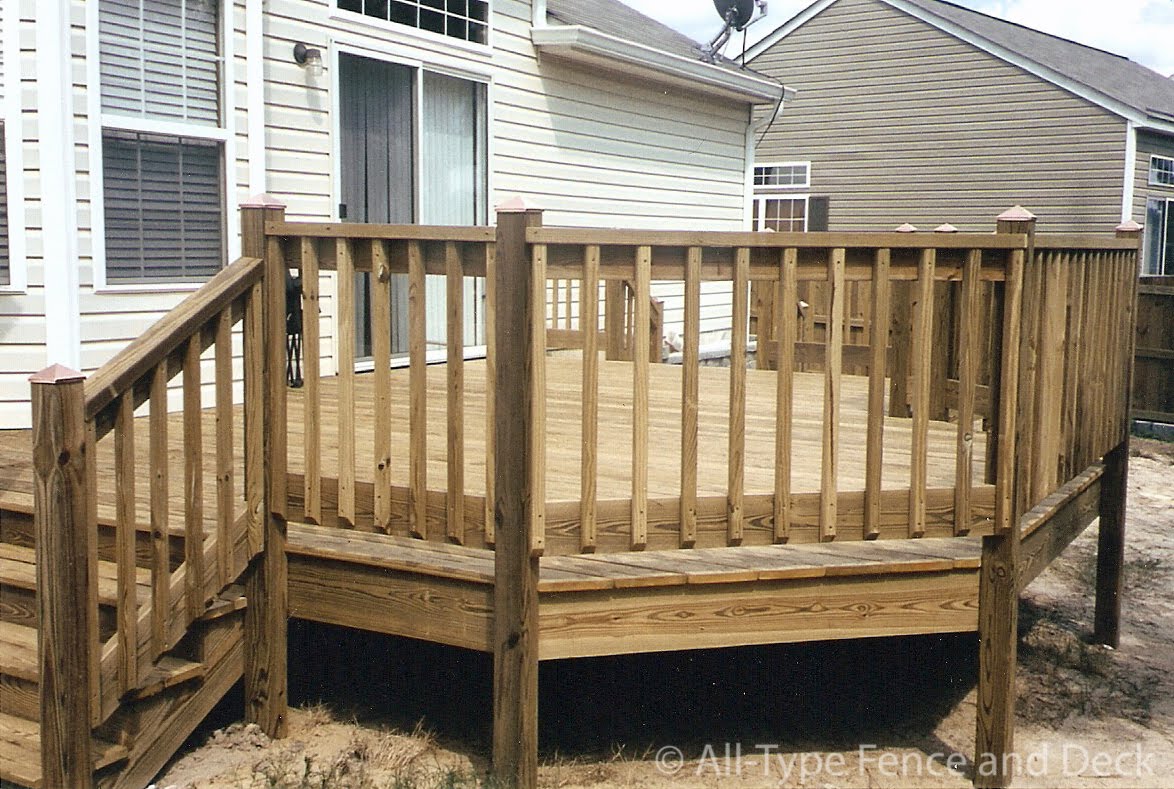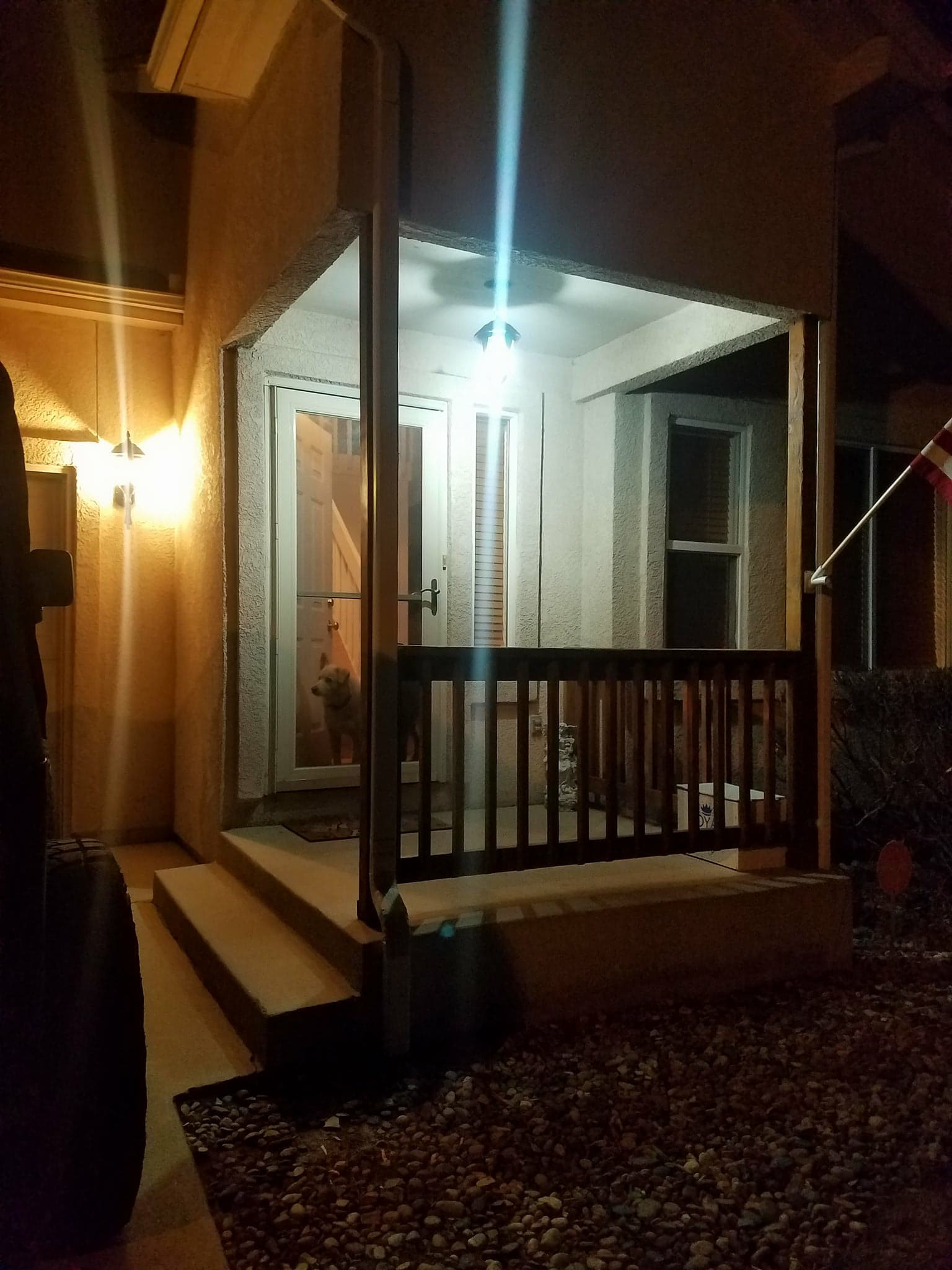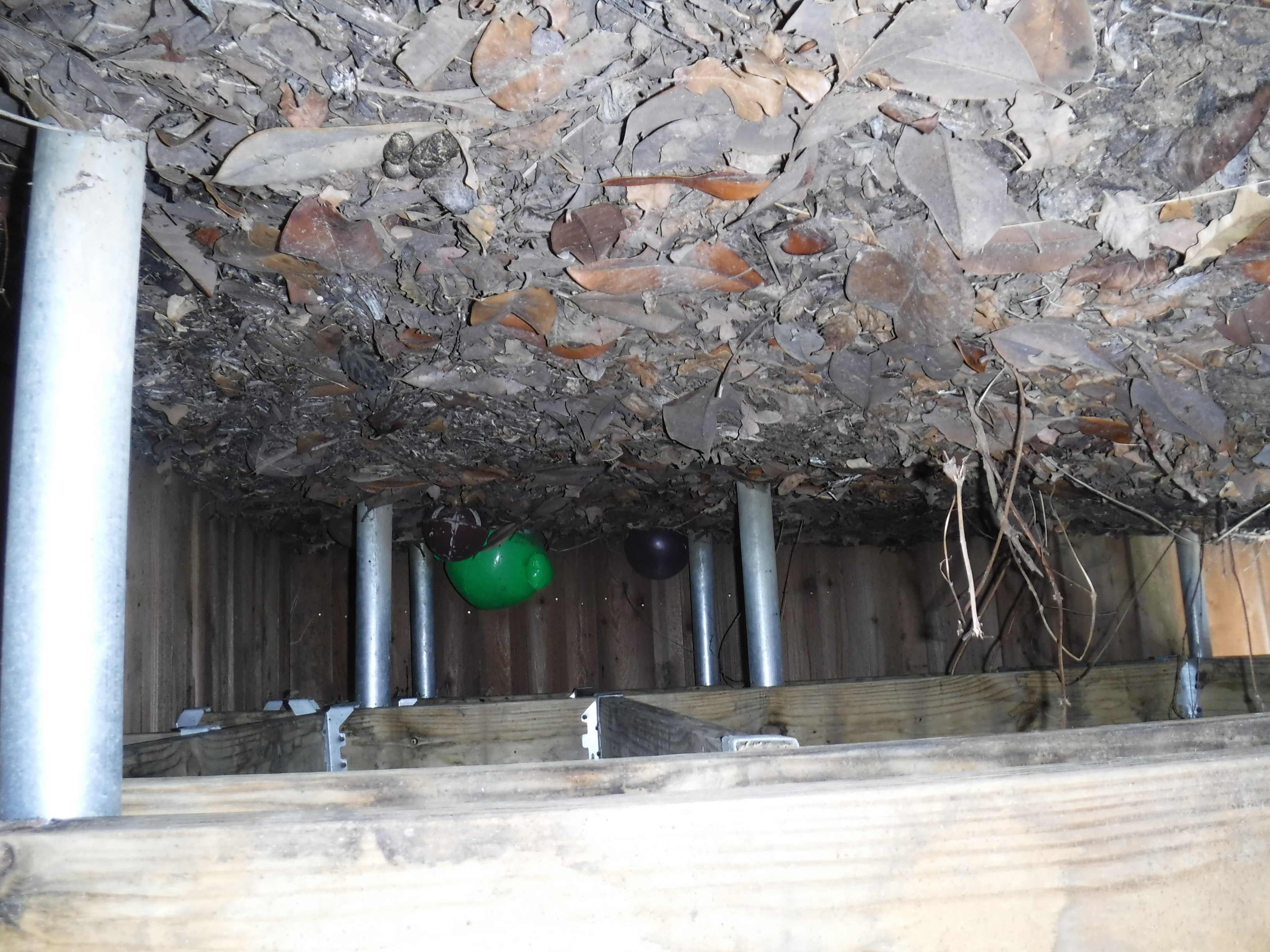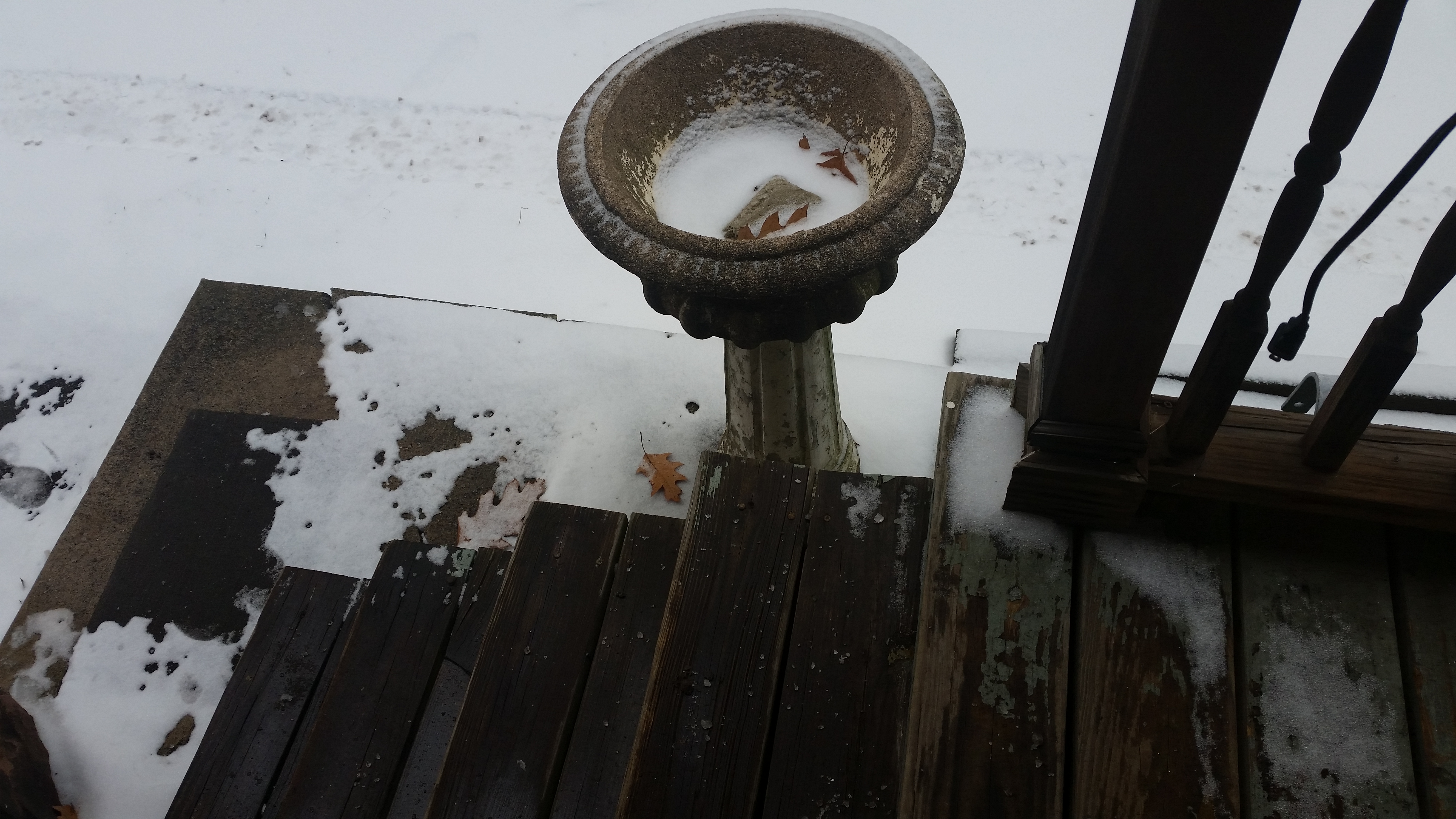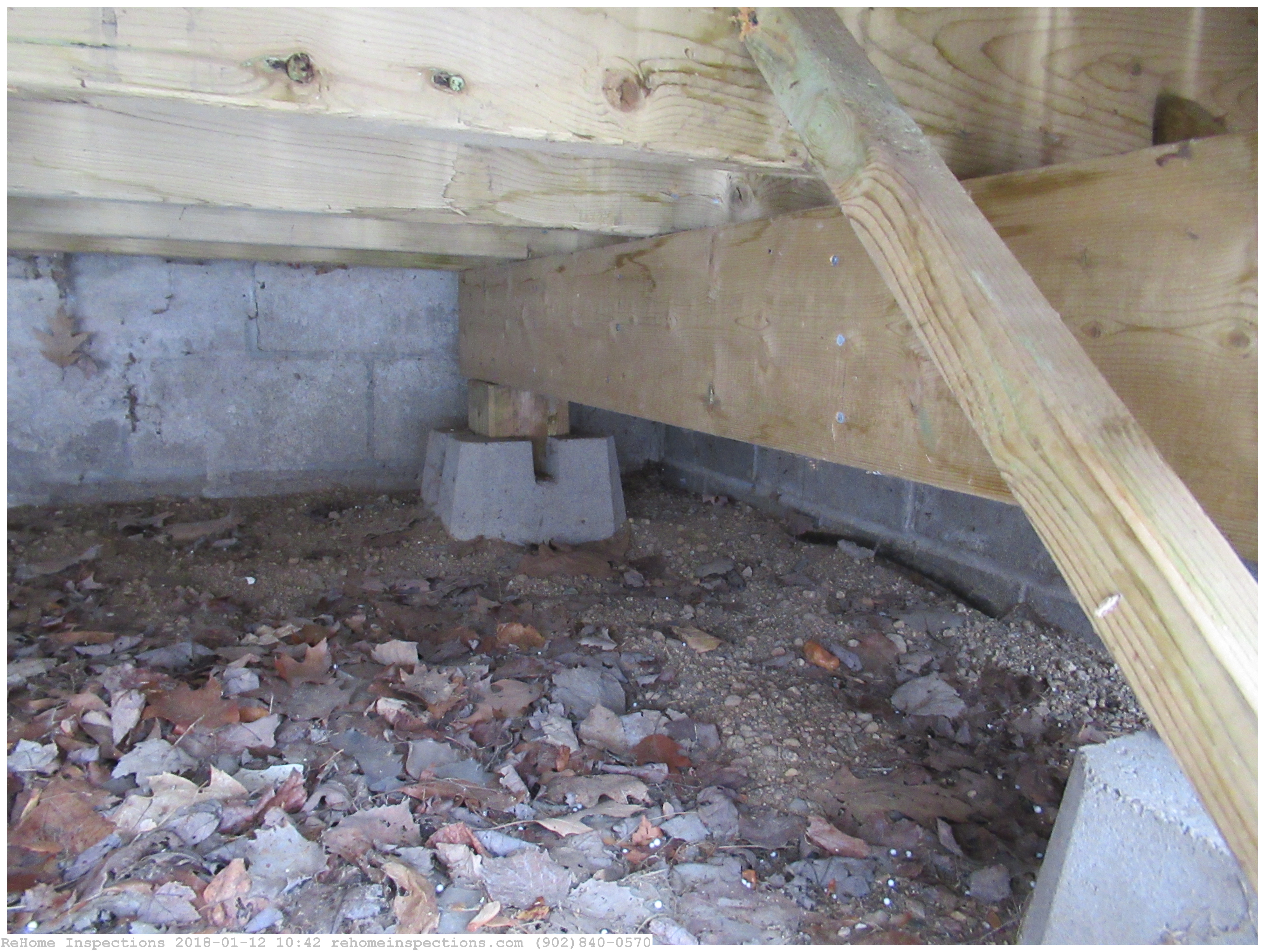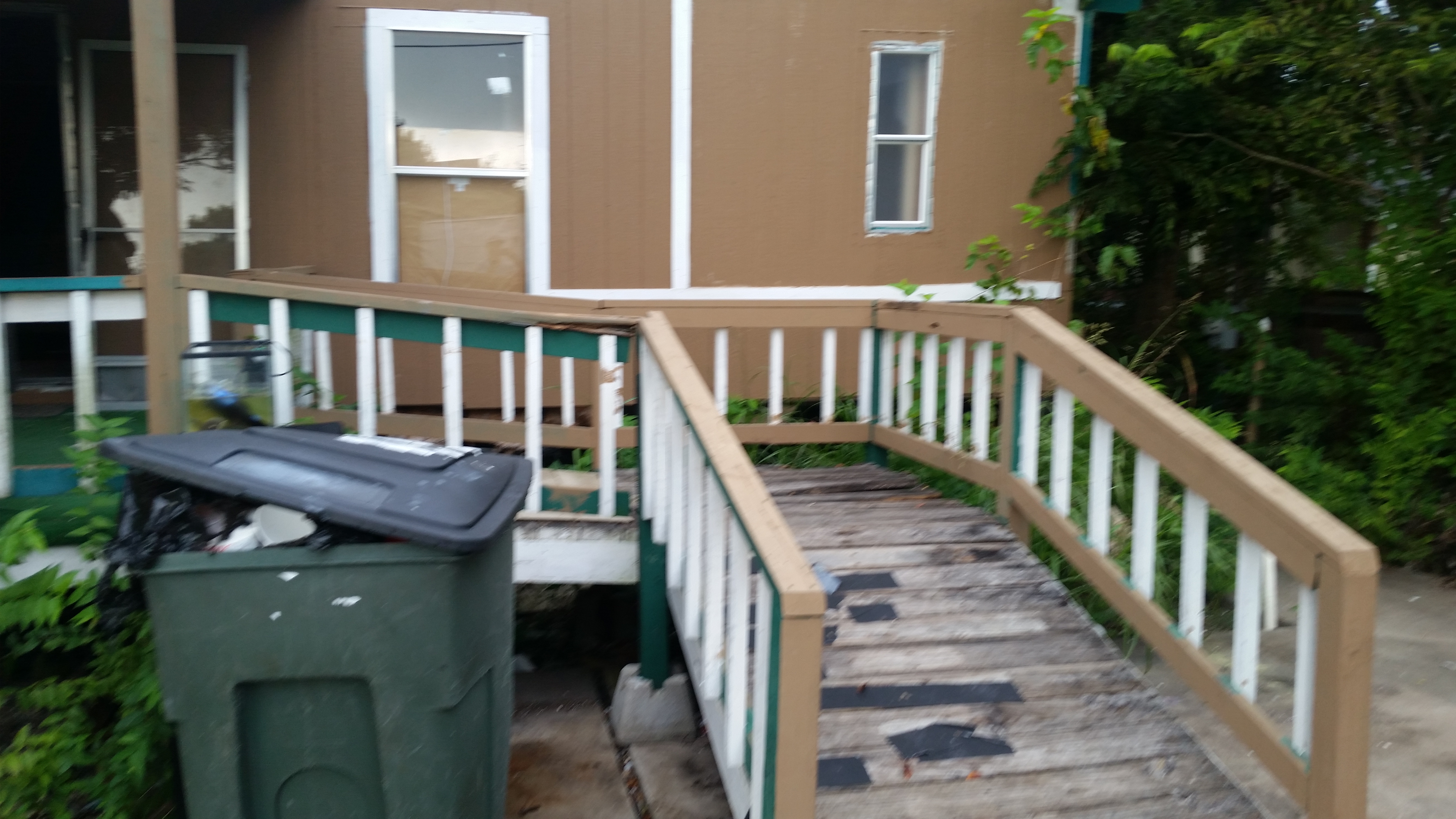The deck’s guardrails should be supported every six feet by posts. Guardrails can be notched, but they can eventually become unsafe. The top of most rails should be at least 36 inches above the deck surface. Inspectors should check for lose railings and for infills that are too far apart.
This photo is of a porch containing a required and up to code electrical outlet. It fulfills the requirements as follows: it’s in the front of the house, is within 6.5 feed from the porch surface, and is weather protected.
Backdrafting can occur with home heaters, boilers, wall heaters, and furnaces which can harm or even kill the occupants. To test for backdrafting, an inspector can do a smoke test, a carbon monoxide test, a lighter test, or check for soot at the top of the water heater.
Barbecue safety is very important. Barbecues should be used in a safe place where kids and pets should not be able to touch them. They should not be used indoors nor under any overhangs/ceilings like a covered patio. Barbecue safety is very important.
The image above is of a deck post that is cut flat. This is not correct. Deck posts should be cut at an angle as to remove the possibility of water pooling on top of it and causing the post to rot prematurely.
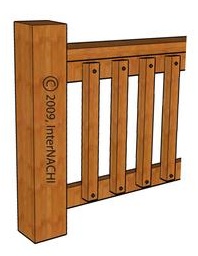
The picture I choose is of the underside of a deck. The deck is just off the pool area. This shows the support memebers for the deck to be metal posts. the correct joist hangers appears to be used as well.
I choose the article “Woodpecker Damage Prevention and Inspection”. It talks in detail about the woodpeckers that effect mainy Michigan and Louisanna. The bird do their damage while looking for food in the wood itself. The damage they leave behind can cause insects to enter the home.
Back door railing on patio has loose spindles and one off completely, some signs of rot on the very bottom ,bolted to wall and glued gate functions well and locks from the inside
Outdoor paint was used on railing done in the last year
Stairs with four or more risers should have a handrail on at least one side. According to the International Standards of Practice for Inspecting Commercial Properties, ramps longer than 6 feet should also have handrails on both sides.
Open risers should not allow the passage of a sphere 4 inches in diameter. On stairs with a total rise of 30 inches or less, the size of the open riser is not limited.
The triangular area formed by a tread, riser and guard should not allow passage of a sphere 6 inches in diameter.
The opening at guards on the sides of stair treads should not allow the passage of a sphere 4-3/8 inches in diameter
Stairs with four or more risers should have a handrail on at least one side. According to the International Standards of Practice for Inspecting Commercial Properties, ramps longer than 6 feet should also have handrails on both sides.
Open risers should not allow the passage of a sphere 4 inches in diameter. On stairs with a total rise of 30 inches or less, the size of the open riser is not limited.
The triangular area formed by a tread, riser and guard should not allow passage of a sphere 6 inches in diameter.
The opening at guards on the sides of stair treads should not allow the passage of a sphere 4-3/8 inches in diameter
This deck has a walking surface that is less than 2 feet in height. In Canada, this is the cut-off point where concrete foundations are required. In this case, concrete deck blocks are adequate. The material underneath should be compacted gravel or similar to resist settlement and compaction.
The idea of a graspable handrail is not understood or adhered to by many builders in my area. The go to ‘handrail’ on a deck staircase is a 2x4. It’s better than nothing but does not conform to current building standards.
Inspecting a deck in front of the house I noticed a lot of deficiencies. Improper footings, and eroded footings were present, detereated deck boards were present, and suggest replacement, baluster spacing too wide, handrail is not graspable, antiskid on ramp is not complete, stairs to deck are not structurally safe for use.
Of more than 45 million decks constructed decks in the US, only 40 percent are deemed safe.
Inspection of decks, and there components are extremely important due to the fact that decks tend to collapse under a load of multiple unsuspecting people. Inspection of al footings, girders, and connections to adjoining structures must be strong and solid. Inspecting for over spanning of all beams, posts, and joists is important for the overall health of a deck. All connection points should be tight, and should not have rot. Deck railings should be checked that they are sufficient to support for lateral loads that push against there connection points. It is critical to observe, notate, and report any deficiencies in a decks construction.
The wooden components of the patio deck are in poor condition and have reached the end of their life expectancy. In addition, the deck construction of the deck no longer meets today’s minimum building standards and is considered unsafe. The deck should be rebuilt/replaced by a qualified deck contractor.
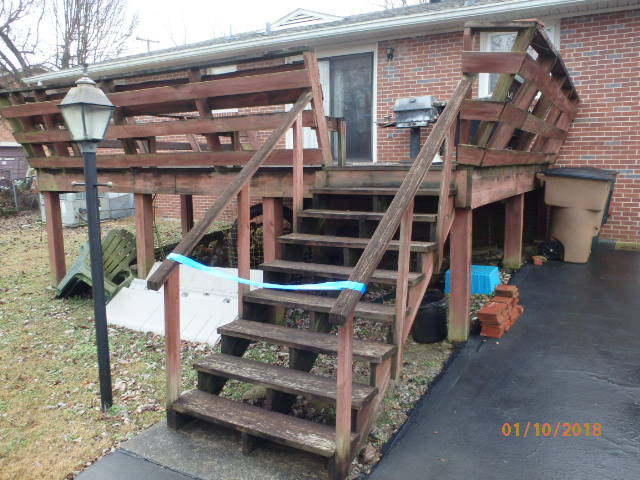
The stairs to this deck are over 30 inches and 4 treads so they require hand rails. The space between the balusters should not let anything bigger than a 4 inch sphere pass through. The handrails seem to be easy to grip and are continuous.
As a seasoned inspector i didn’t realize that the BTU output on direct vent appliances effected the clearances from the air openings in the building. Due to the multiple direct vent appliances that are now installed, this is very important to know.
Wood decay is the decomposition of wood as a result of actions of certain fungi. Termites and carpenter ants do not cause wood rot but are attracted to it. Termites will also inhabit sound wood, so the pick test should still be done. Three common types of wood rot are brown, white, and dry. Brown rot causes the wood to break down into brown cubes that split against the grain. White rot appears whitish, stringy and mushy, and tends to be more common in hardwoods. Dry rot has been used to describe decayed wood that has since dried and ceased decaying.
The image I chose has to do with spacing of boards that are placed on the deck surface. They need to be at a 1/8" spacing in order to allow water to properly drain from the deck and prevent pooling on the deck.
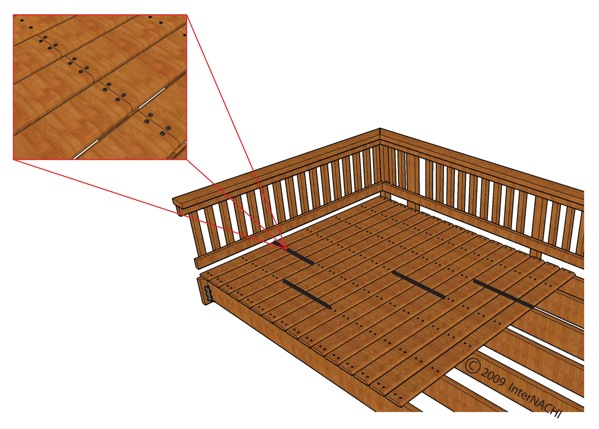
The image that I chose is in regards to the ledger beam and joist hangers. It is very important to make sure that the ledger board is properly bolted to the home and that each beam that is connected to the ledger is done so with a joist hanger and with the proper nails.
